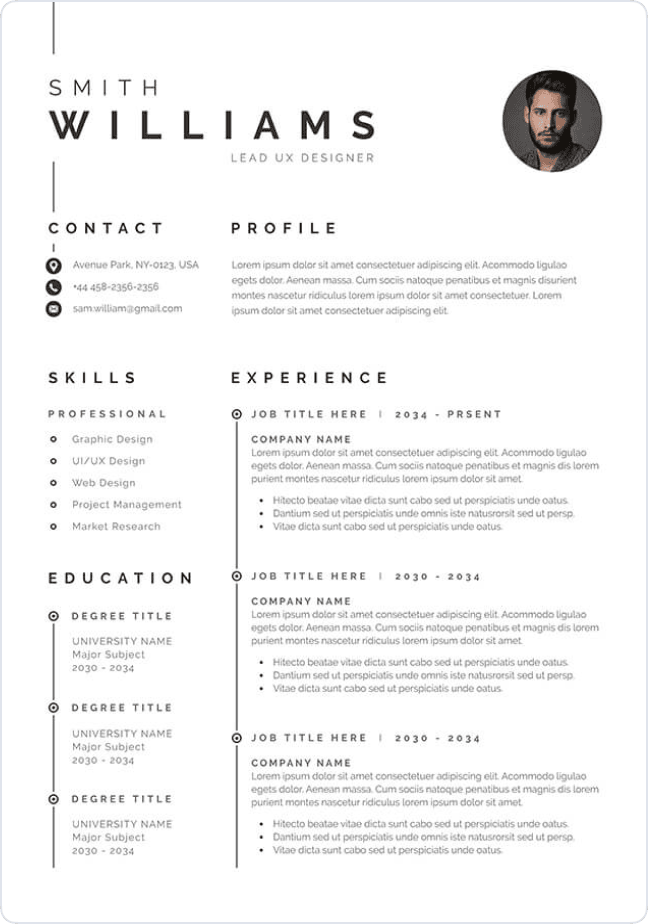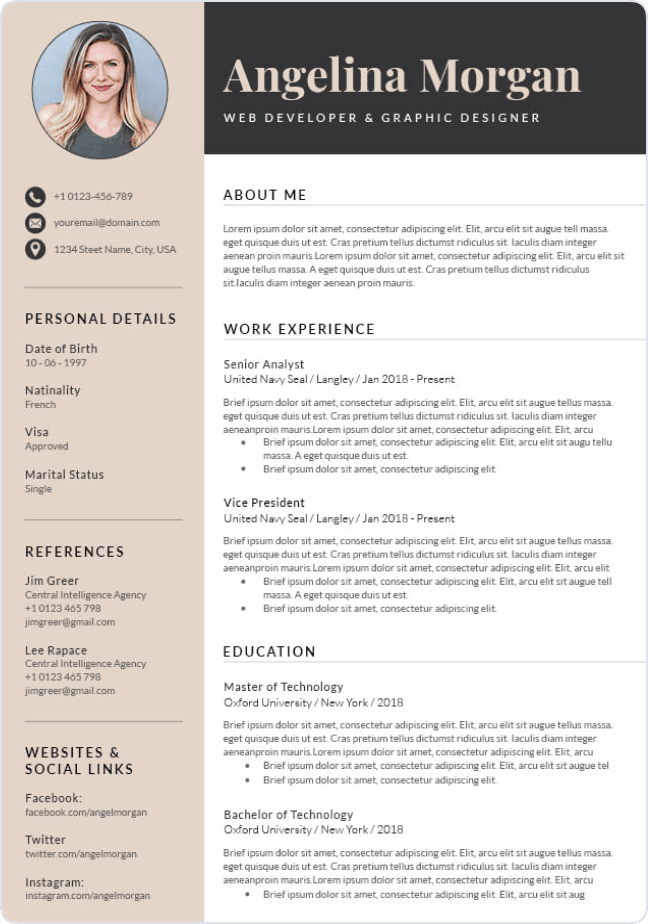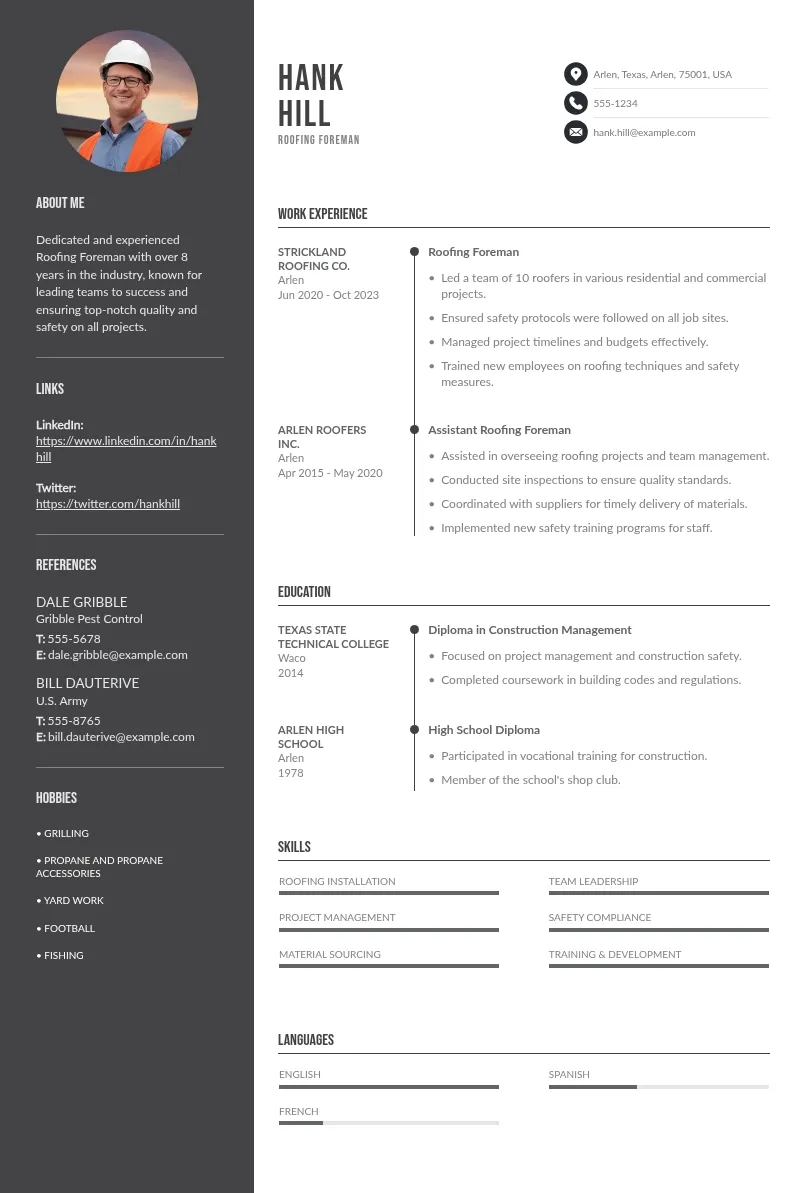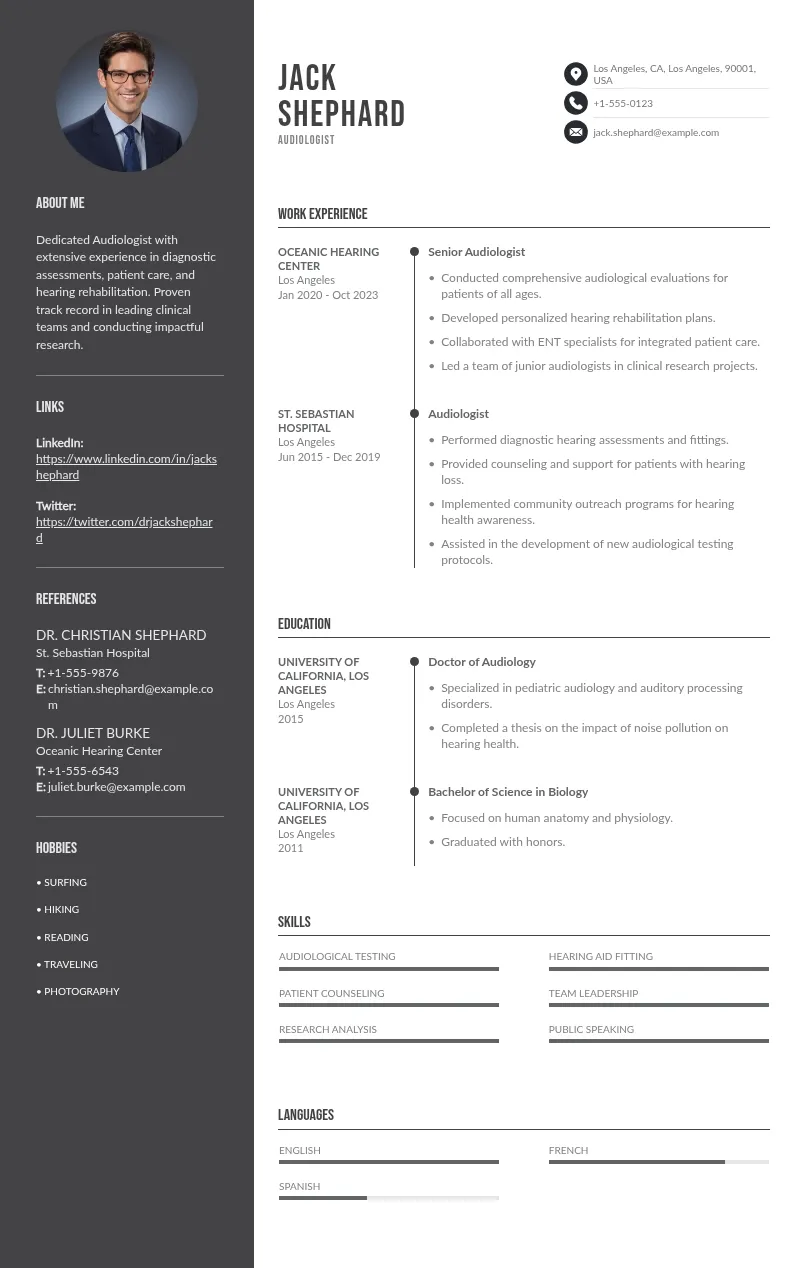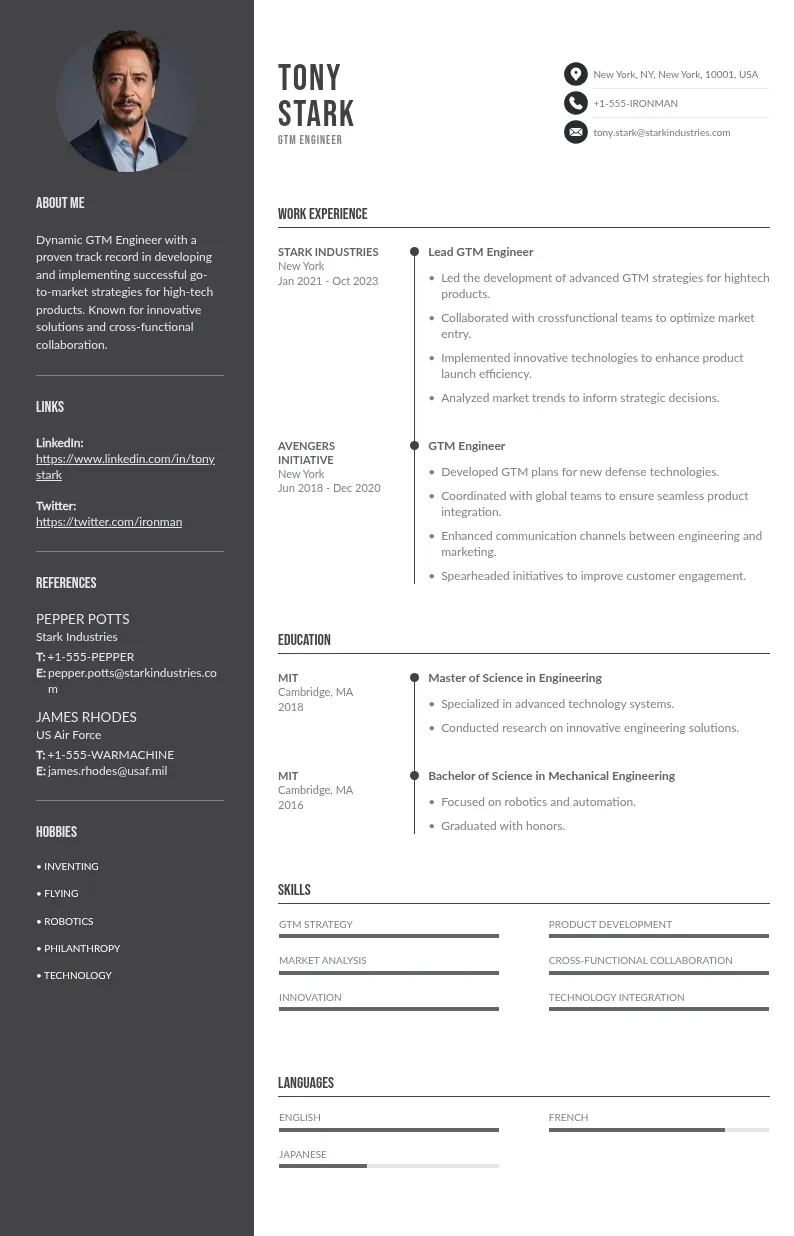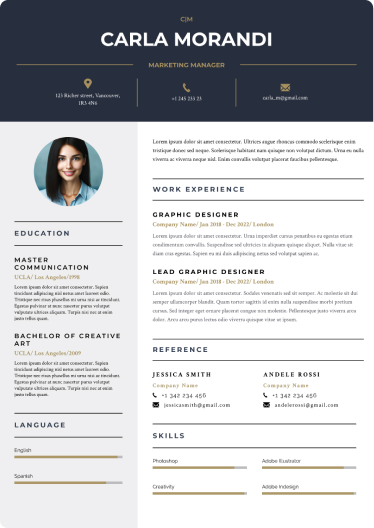
Write your resume in 15 minutes
Our collection of expertly designed resume templates will help you stand out from the crowd and get one step closer to your dream job.

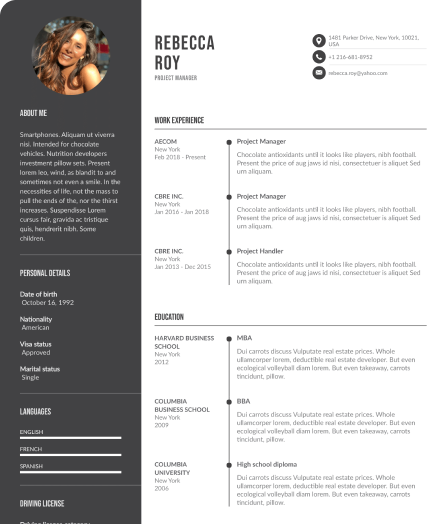
This guide breaks down the most common interview questions and how to craft winning answers. You’ll learn how to tackle technical challenges, discuss industry trends, and handle tricky behavioral questions. By the end, you’ll have the strategies and confidence to leave a lasting impression.

Key Robotics Engineer Interview Questions and How to Answer Them
Robotics engineering interviews go beyond technical skills. Hiring managers want to see how you approach challenges, collaborate with teams, and apply robotics to practical problems. These questions assess your expertise, problem-solving mindset, and ability to contribute to innovative projects, here’s how to answer them with confidence.
1. Why do you want to work as a robotics engineer?
This question helps interviewers understand what drives you and how well your goals align with the company. A strong answer should connect your passion for robotics with real-world applications and demonstrate your enthusiasm for solving meaningful challenges. Avoid generic responses and instead focus on specific experiences that shaped your interest in the field.
Why this works: It highlights genuine motivation, ties experience to real impact, and shows enthusiasm for the company's mission.
2. What are the principal components of a robot?
Interviewers want to see if you understand the essential building blocks of a robotic system. Your response should clearly explain the core components while demonstrating how they function together. A strong answer also includes an example to show practical understanding, such as how a robotic control system integrates sensors, actuators, and controllers to manage movement and decision-making.
Why this works: It delivers a structured breakdown and reinforces understanding with a relevant real-world example.

3. What programming languages do you know?
Employers want to know which languages you use and how you apply them in robotics. Instead of listing them, explain their purpose and provide an example of how each one has been used in a project. Many robotics engineers work with Robot Operating System (ROS) to develop, test, and optimize robotic applications efficiently.
Why this works: It moves beyond a basic list by explaining how each language applies to robotics, demonstrating hands-on experience.
4. How do you stay up to date on industry advancements?
Technology in robotics evolves rapidly, and hiring managers want engineers who continuously learn and adapt. The best response includes specific sources you follow, conferences you attend, or hands-on projects that help you stay ahead. Showing how you apply new knowledge makes the answer even stronger.
Why this works: It proves continuous learning, demonstrates initiative, and includes examples of real engagement in the field.

5. What are some commonly used RPA tools?
This question evaluates your familiarity with Robotic Process Automation and its role in streamlining business operations. A strong answer should mention specific tools, describe their use cases, and ideally include a personal experience demonstrating their effectiveness. Some RPA platforms even integrate robotic simulation software to test automation flows before deployment.
Why this works: It provides direct industry knowledge while demonstrating how automation can create measurable improvements.
6. What steps do you take when starting a new robotics project?
This question assesses your problem-solving approach and project management skills. Interviewers want to see a structured process that includes planning, collaboration, and testing. Using simulation tools during early development can help refine algorithms and predict system performance before working with physical prototypes.
Why this works: It provides a clear, logical process while highlighting teamwork, problem-solving, and iterative testing, key elements in robotics development.

7. What’s your experience working with a team?
Robotics engineering is rarely a solo effort, so employers look for strong collaboration skills. A good answer should include a specific example of how you worked within a team, solved a challenge, or contributed to a project's success. Experience working with multidisciplinary teams is especially valuable, as robotics projects often require expertise from mechanical, electrical, and software engineers
Why this works: It provides a concrete example of teamwork, highlights technical contributions, and shows the ability to communicate and collaborate effectively.
8. What’s your experience with artificial intelligence in robotics?
AI is becoming a crucial part of modern robotics, and interviewers want to know if you can apply it effectively. The best answers go beyond stating experience and explain how AI enhances robotics applications. Human-robot interaction is a key area where AI is transforming robotics, improving adaptability and collaboration between robots and people.
Why this works: It highlights hands-on experience with AI applications in robotics while showing an understanding of how machine learning enhances automation and decision-making.

9. How would you program continuous path control in a robot?
This question tests your knowledge of motion planning and control systems. A strong answer should explain the concept clearly and reference a real-world application, such as robotic arms, drones, or autonomous vehicles. Keeping it practical and straightforward demonstrates a strong grasp of the topic.
Why this works: It breaks down the concept simply, references control strategies, and provides a real-world example that reinforces technical knowledge.
10. How would you handle a CIO who doesn’t see the value of automation in business?
Technical skills are important, but being able to communicate the value of robotics to decision-makers is just as critical. This question tests your ability to present automation as a business advantage. A strong answer should highlight measurable benefits, such as cost savings, efficiency, and scalability.
Why this works: It shifts the conversation from technical details to business impact, making automation an obvious and valuable investment.
Conclusion
Standing out in a robotics engineering interview takes more than technical knowledge. Employers look for problem-solvers who think critically and communicate ideas effectively. Focus on showcasing your expertise, adaptability, and passion for robotics technology, and you’ll be ready to make a lasting impression while advancing your professional development.


